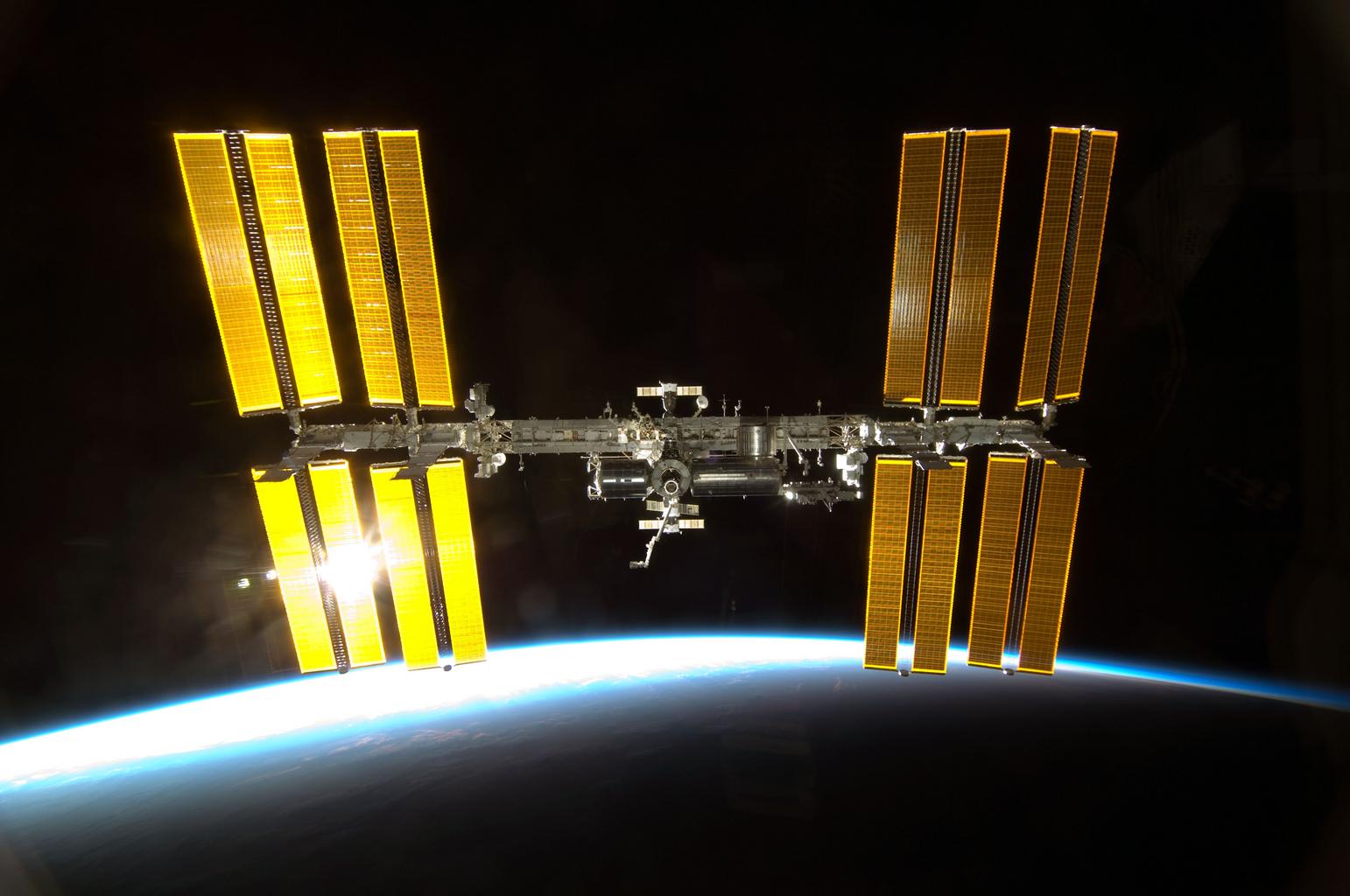'Unknown' space debris almost flew within 1 mile of the International Space Station. As junk builds up in orbit, the danger of collisions is growing.

NASA says "an unknown piece of space debris" flew uncomfortably close
the International Space Station on Tuesday.
The debris, which was predicted to zip past the ISS at 6:21 p.m. ET, would have
come within 1.39 kilometers (0.86 mile) of the station.
However, mission controllers fired the engine of an attached Russian cargo
spaceship to move the orbiting laboratory out of the way.
The threat of space debris has grown in recent decades more satellites launch,
countries test space weaponry, and dead or disabled spacecraft crash into each
other.
A "piece of unknown space debris" passed within several kilometers of
the International Space Station on Tuesday night, NASA said in a blog post.
Engineers predicted the mystery hunk of space junk would zip by the space
station at about 6:21 p.m. ET at a distance of just 1.39 kilometers, or less
than 0.9 miles away. That's an extremely close shave for objects moving at
about 17,500 mph, or more than 10 times faster than a speeding bullet.
Though a miss was forecast, NASA acted out of "an abundance of
caution" to avoid a collision with the football field-size facility by
conducting an avoidance maneuver.
During the operation, the three Expedition 63 crew members who live aboard the
station - astronaut Chris Cassidy and cosmonauts Anatoly Ivanishin and Ivan
Vagner - sealed themselves inside a Soyuz spaceship attached to the ISS. In the
unlikely event that debris actually struck the station, this would have
improved their chances of escape.
Then, starting around 5:19 p.m., Mission Control fired the thrusters of a
Russian cargo spaceship for 150 seconds to boost the larger orbiting laboratory
complex that it was attached to out of harm's way.
Such drastic maneuvers are standard protocol if there's a greater than
1-in-10,000 chance of collision, according to NASA.
Shortly afterward, crew members left their Soyuz "safe haven,"
tweeted NASA Administrator Jim Bridenstine.
- The more objects we launch into
orbit, the worse our space junk problem gets
"The @Space_Station has maneuvered 3 times in 2020 to avoid debris. In the last 2 weeks, there have been 3 high concern potential conjunctions," Bridenstine said in another tweet. "Debris is getting worse!"
Even small pieces of junk are a major threat; a hit by a 10-centimeter sphere of aluminum would be akin to detonating 15 pounds of TNT, NASA senior scientist Jack Bacon told Wired in 2010.
And in Earth's orbit right now, millions of pieces of space junk are flying around at similar speeds, including more than 650,000 objects that are softball- to fingernail-sized, as Business Insider previously reported.
That number is only expected to increase as the US and other nations enter a new era of commercial space travel and satellite use. Of the nearly ten thousand satellites humans have put into orbit since the 1950s, about 70% of them are destroyed, disabled, or dead, according to The New Yorker. Sometimes a dead satellite can collide with another dead satellite, or a functional one, generating enormous new clouds of debris.
Additionally, the US, Russia, and India in recent years have tested anti-satellite weapons that launch a "kill vehicle" (essentially a large bullet) on a large missile to obliterate in-orbit spacecraft, spreading countless pieces of debris in the process.
If enough debris is made, the expanding chaos could trigger what's called the Kessler Syndrome, in which so much junk is flying around the planet that launching almost anything into space would be too risky.
Essentially, we could trap ourselves in our own junk, as Donald J. Kessler, the astrophysicist behind the Kessler Syndrome theory, has said.
"We are entering a new era of debris control," he wrote in 2009. "An era that will be dominated by a slowly increasing number of random catastrophic collisions."
For now, the US military-run Space Surveillance Network (SSN) and its partners are monitoring as many objects in space as it can - plus all potential space collisions. The network documents hundreds of thousands of possible conjunctions (or near-misses) each year, notifying satellite operators - and agencies like NASA - as far ahead of time as possible to avoid a hit.
In 2020, the US Department of Commerce's Office of Space Commerce has sought $15 million in additional funds for its budget next year, to increase efforts to monitor and remove space debris from orbit. Those funds have not yet been approved, as Bridenstine noted after the ISS avoidance maneuver.



Ingen kommentarer:
Legg inn en kommentar
Merk: Bare medlemmer av denne bloggen kan legge inn en kommentar.